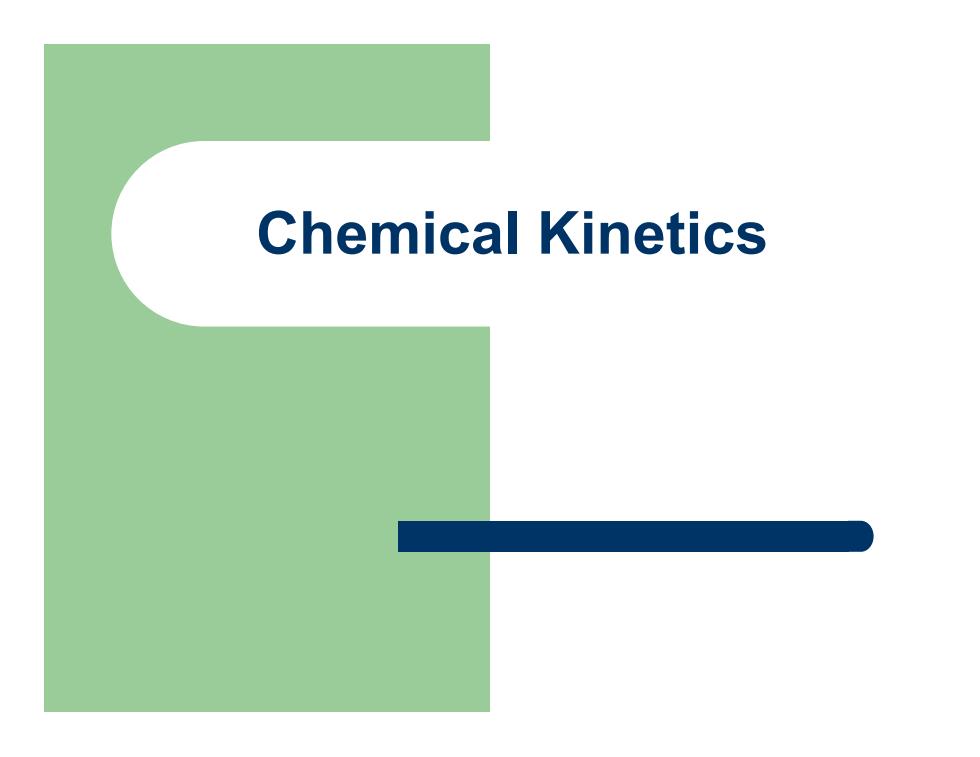
Chemical Kinetics
Chemical Kinetics
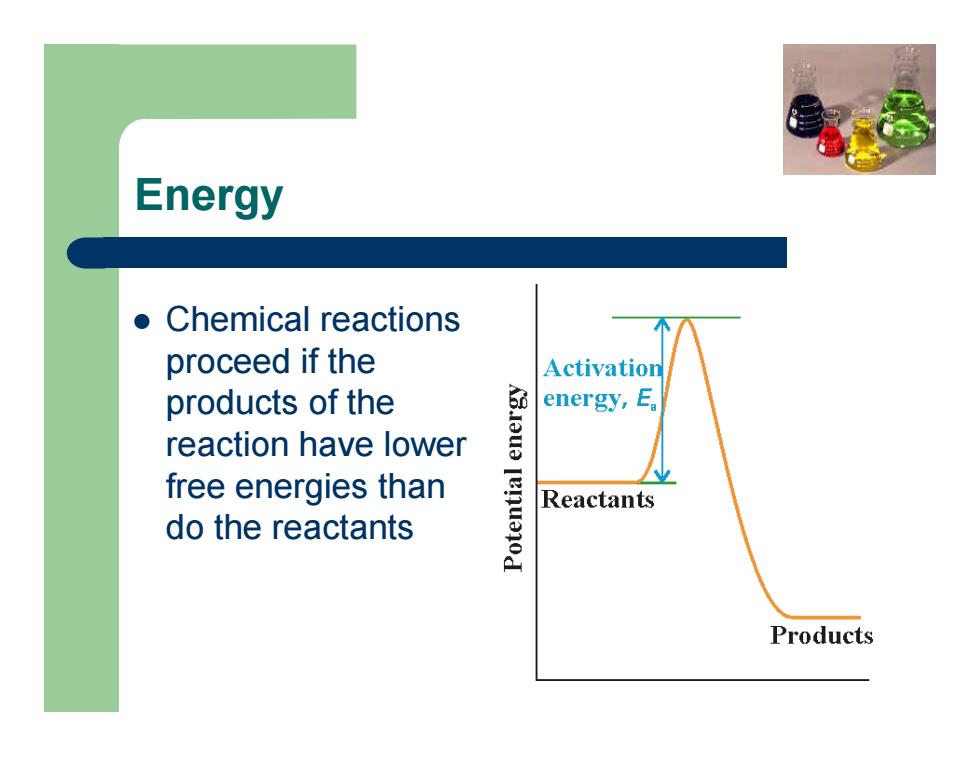
Energy z Chemical reactions proceed if the products of the reaction have lower free energies than do the reactants
Energy z Chemical reactions proceed if the products of the reaction have lower free energies than do the reactants
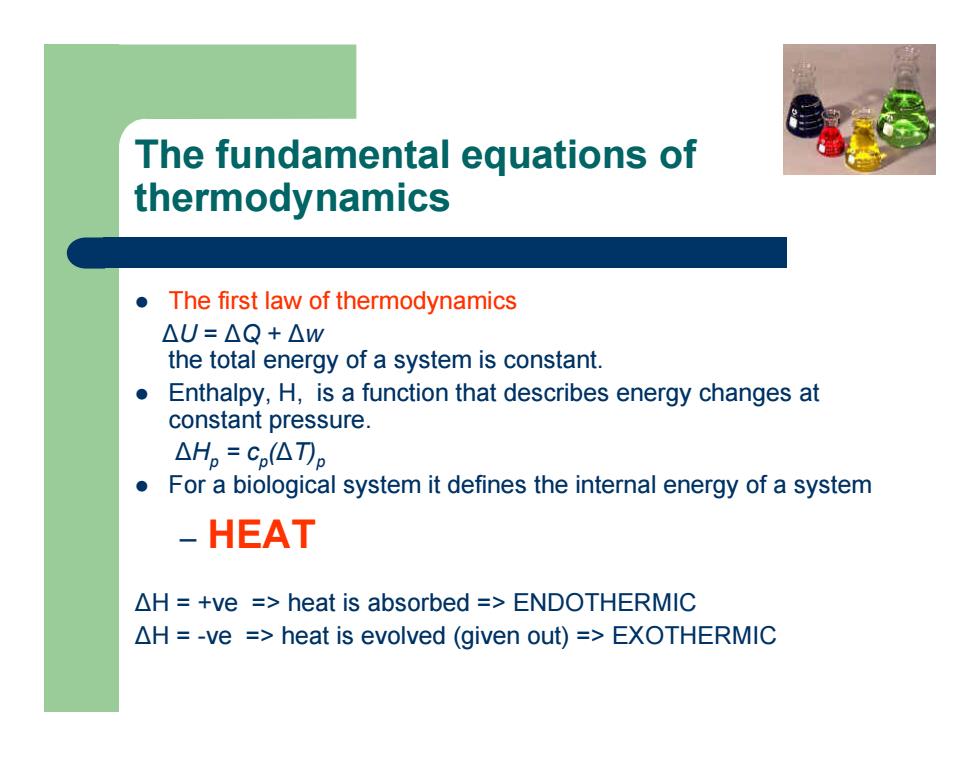
The fundamental equations of thermodynamics z The first law of thermodynamics Δ U = Δ Q + Δ w the total energy of a system is constant. z Enthalpy, H, is a function that describes energy changes at constant pressure. Δ Hp = cp (ΔT) p z For a biological system it defines the internal energy of a system – HEAT ΔH = +ve => heat is absorbed => ENDOTHERMIC ΔH = -ve => heat is evolved (given out) => EXOTHERMIC
The fundamental equations of thermodynamics z The first law of thermodynamics Δ U = Δ Q + Δ w the total energy of a system is constant. z Enthalpy, H, is a function that describes energy changes at constant pressure. Δ Hp = cp (ΔT) p z For a biological system it defines the internal energy of a system – HEAT ΔH = +ve => heat is absorbed => ENDOTHERMIC ΔH = -ve => heat is evolved (given out) => EXOTHERMIC
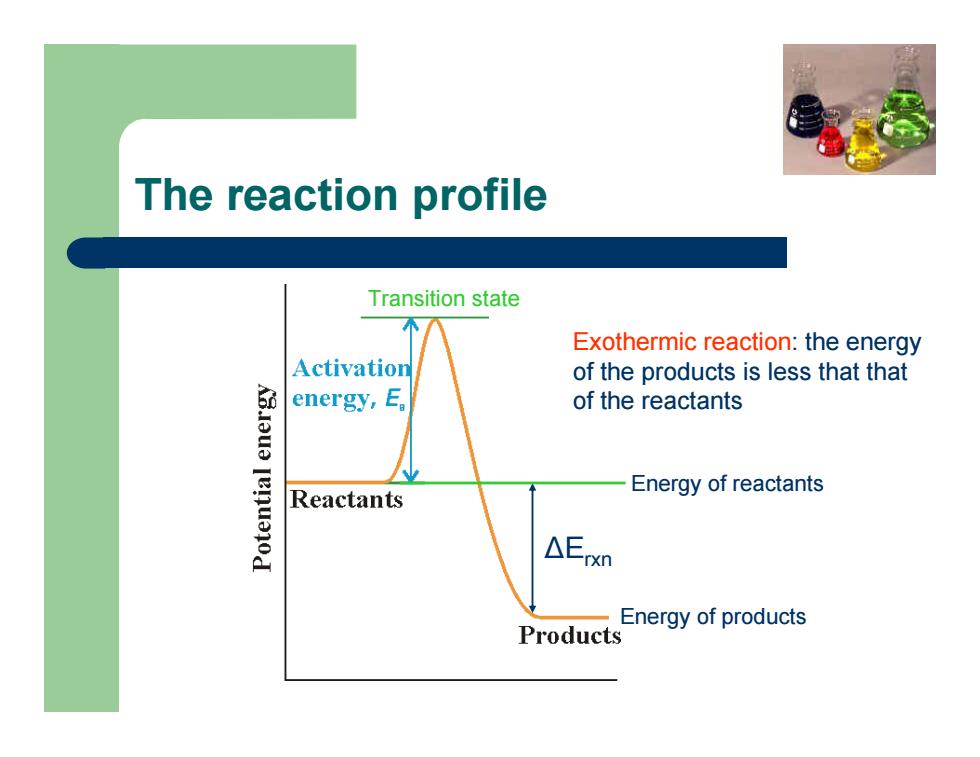
The reaction profile Δ Erxn Transition state Energy of reactants Energy of products Exothermic reaction: the energy of the products is less that that of the reactants
The reaction profile Δ Erxn Transition state Energy of reactants Energy of products Exothermic reaction: the energy of the products is less that that of the reactants

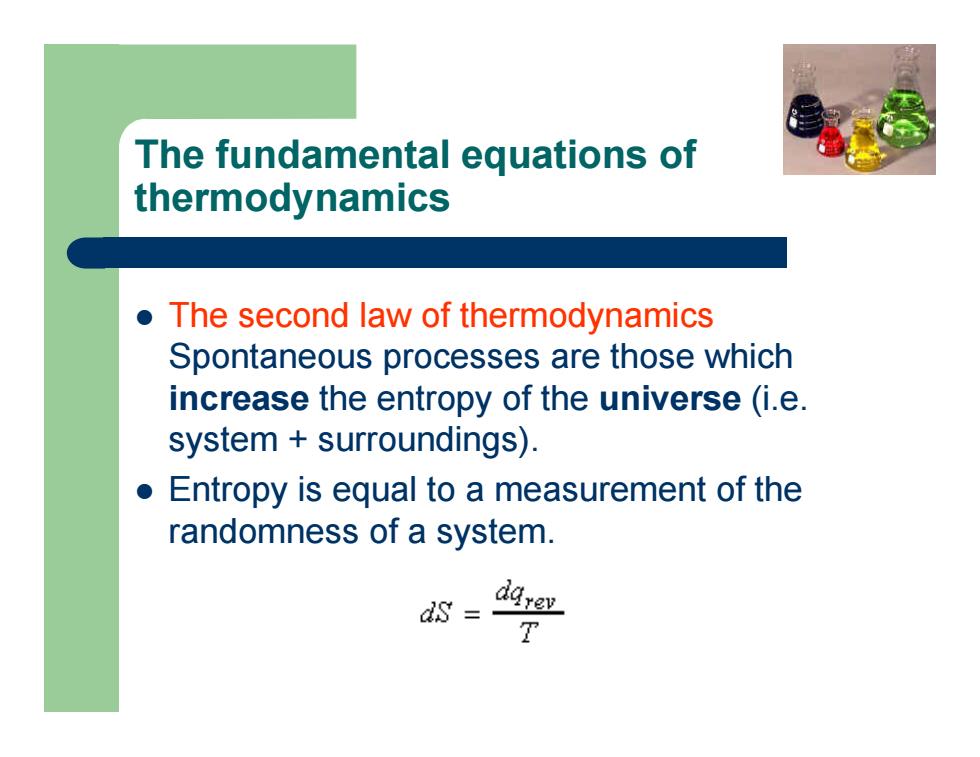
z The second law of thermodynamics Spontaneous processes are those which increase the entropy of the universe (i.e. system + surroundings). z Entropy is equal to a measurement of the randomness of a system. The fundamental equations of thermodynamics
z The second law of thermodynamics Spontaneous processes are those which increase the entropy of the universe (i.e. system + surroundings). z Entropy is equal to a measurement of the randomness of a system. The fundamental equations of thermodynamics
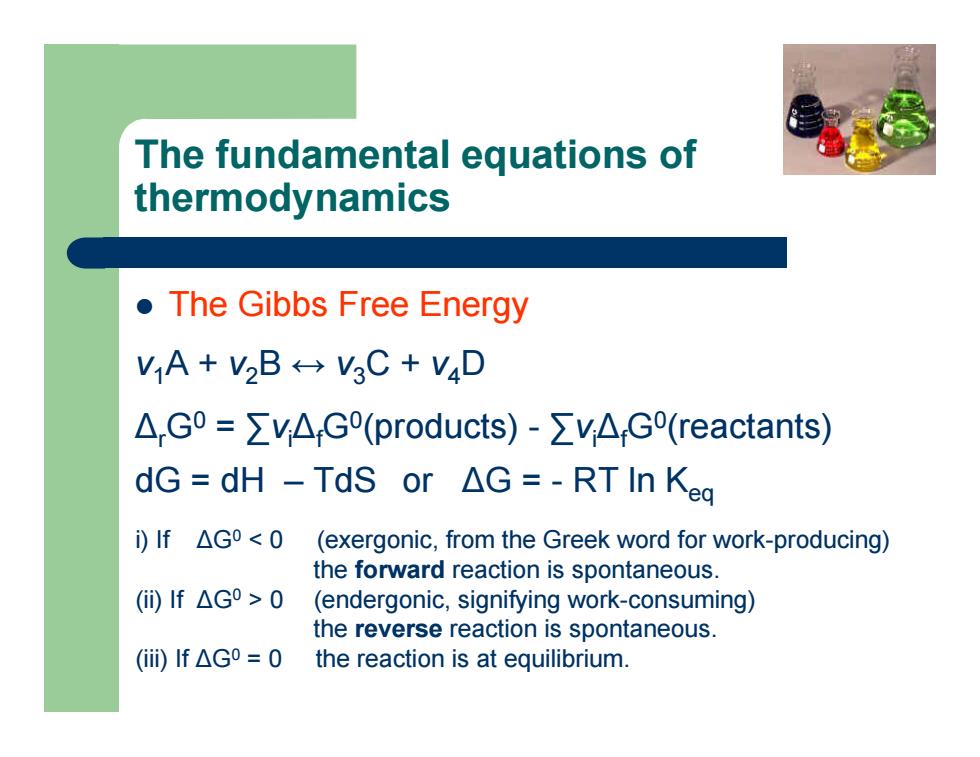
z The Gibbs Free Energy v1A + v2B ↔ v3C + v4D ΔrG0 = ∑viΔfG0(products) - ∑viΔfG0(reactants) dG = dH – TdS or ΔG = - RT ln Keq The fundamental equations of thermodynamics i) If ΔG0 0 (endergonic, signifying work-consuming) the reverse reaction is spontaneous. (iii) If ΔG0 = 0 the reaction is at equilibrium
z The Gibbs Free Energy v1A + v2B ↔ v3C + v4D ΔrG0 = ∑viΔfG0(products) - ∑viΔfG0(reactants) dG = dH – TdS or ΔG = - RT ln Keq The fundamental equations of thermodynamics i) If ΔG0 0 (endergonic, signifying work-consuming) the reverse reaction is spontaneous. (iii) If ΔG0 = 0 the reaction is at equilibrium
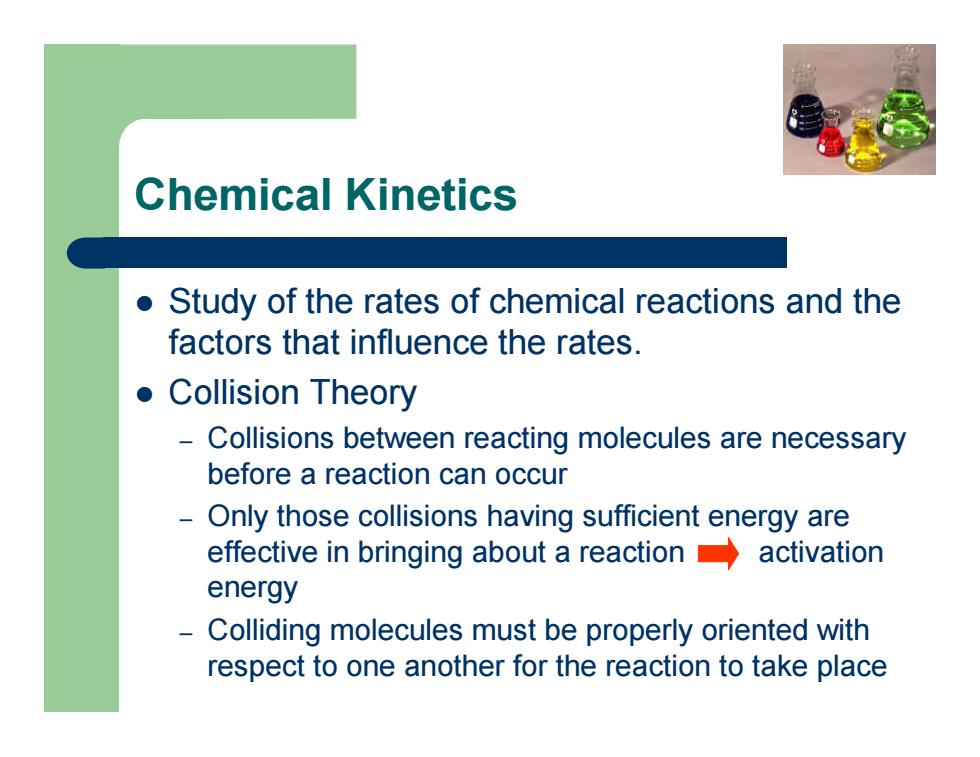
Chemical Kinetics z Study of the rates of chemical reactions and the factors that influence the rates. z Collision Theory – Collisions between reacting molecules are necessary before a reaction can occur – Only those collisions having sufficient energy are effective in bringing about a reaction activation energy – Colliding molecules must be properly oriented with respect to one another for the reaction to take place
Chemical Kinetics z Study of the rates of chemical reactions and the factors that influence the rates. z Collision Theory – Collisions between reacting molecules are necessary before a reaction can occur – Only those collisions having sufficient energy are effective in bringing about a reaction activation energy – Colliding molecules must be properly oriented with respect to one another for the reaction to take place
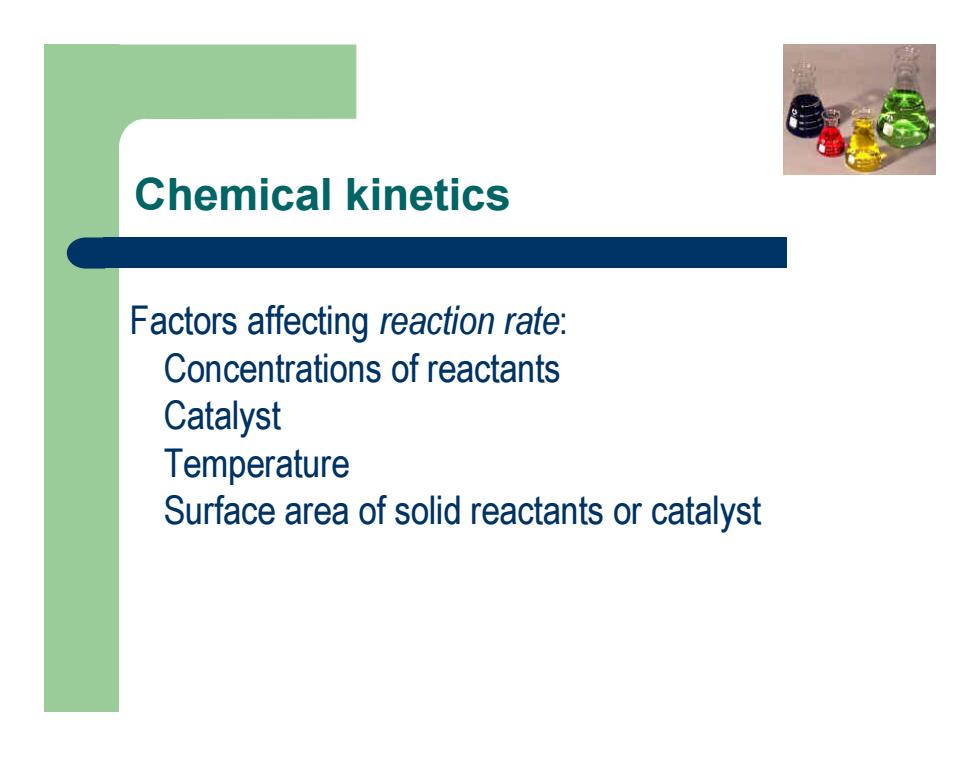
Chemical kinetics Factors affecting reaction rate: Concentrations of reactants Catalyst Temperature Surface area of solid reactants or catalyst
Chemical kinetics Factors affecting reaction rate: Concentrations of reactants Catalyst Temperature Surface area of solid reactants or catalyst
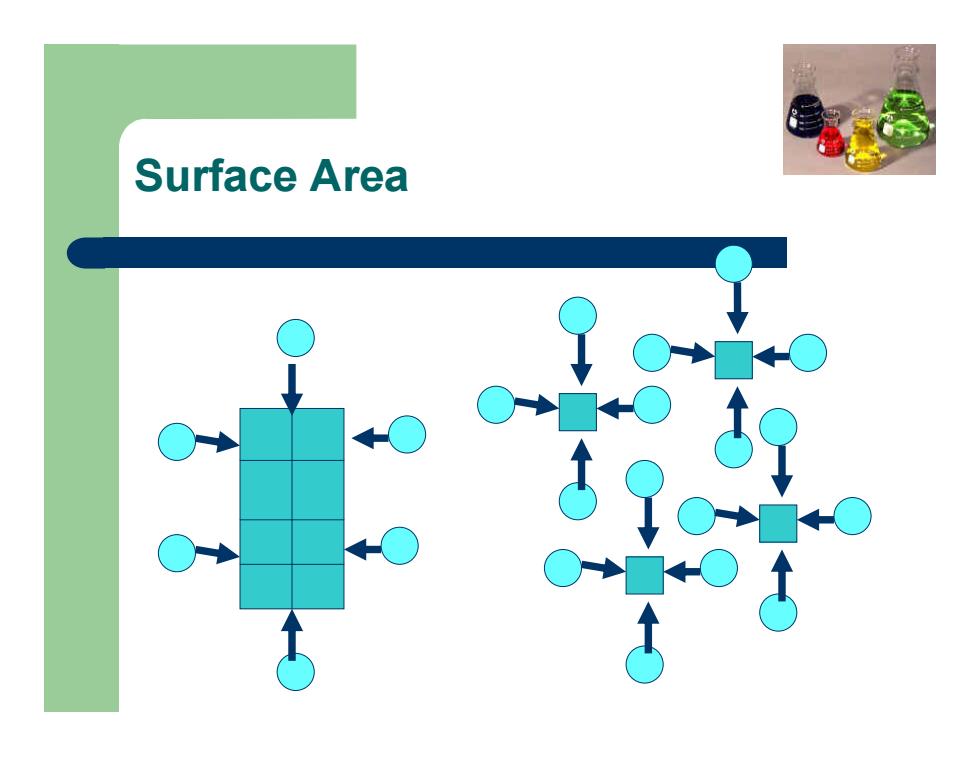
Surface Area
Surface Area